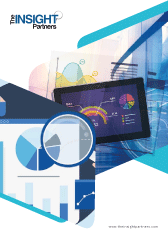$4450
$3560
The digital health market size was valued at US$ 389.18 billion in 2024 and is projected to reach US$ 1921.38 billion by 2031. The market is expected to register a CAGR of 25.7% during 2025–2031.
Digital Health Market AnalysisIncreasing healthcare expenses and the demand for more effective care delivery has encouraged governments and healthcare providers to implement digital solutions. Rising use of smartphones and growing penetration of internet has brought digital health products within reach of the people across the globe. Growing aging population and the rising incidence of chronic conditions is driving the need for advance monitoring and management, which as a result promotes the support of the digital health technologies. Government policies and initiatives hasten the uptake of digital health solutions. Nevertheless, there remain challenges, which include data security and privacy issues, the cost of implementation being very high, and regulatory hurdles. The interoperability need across various digital health systems and technology-related disparities in accessing healthcare threaten to present strong barriers to broader uptake.
Digital Health Market OverviewDigital health refers to the integration of digital technologies into healthcare practice to improve the quality, efficiency, and accessibility of medical care. This includes both hardware (tools) and software such as electronic health records (EHRs), telemedicine systems, mobile health applications (mHealth), wearable technology, and digital therapeutics. The technologies simplify real-time monitoring, personalized treatment plans, remote consultations, and data-based decision-making. The outcome of digital health is enhanced patient outcomes, lowered healthcare costs, improved patient engagement, and better access to care, especially in underserved areas. Applications range from chronic disease management to mental health assistance, preventive medicine, and administrative effectiveness. Digital health solutions are divided into telehealth, mHealth, digital therapeutics, and healthcare analytics.
Customize Research To Suit Your Requirement
We can optimize and tailor the analysis and scope which is unmet through our standard offerings. This flexibility will help you gain the exact information needed for your business planning and decision making.
Digital Health Market: Strategic Insights

| Market Size Value in | US$ 306,443.04 million in 2022 |
| Market Size Value by | US$ 1,909,524.56 million by 2030 |
| Growth rate | CAGR of 25.7% from 2022 to 2030 |
| Forecast Period | 2022-2030 |
| Base Year | 2022 |

Naveen
Have a question?
Naveen will walk you through a 15-minute call to present the report’s content and answer all queries if you have any.
 Speak to Analyst
Speak to Analyst
Market Drivers:
- Rising Prevalence of Chronic Diseases and Ageing Populations: As diabetes, cardiovascular conditions, respiratory diseases, and cancer are gradually becoming the common chronic conditions, healthcare systems worldwide are under tremendous pressure to provide more effective and efficient healthcare support. Ageing populations worsen this pressure as people from this agr group require additional attention and continuous management. According to a report published in October 2024, by theWorld Health Organization (WHO), the global population aged 60 and above is projected to grow from 1 billion in 2020 to 1.4 billion in 2030 and 2.1 billion in 2050. Furthermore, the people aged 80 and above are also projected to triple to 426 million. This ageing phenomenon is propelling the need for digital healthcare solutions for older people, spurring fast expansion in the digital health market.
- Favorable Government Initiatives to Advance the Healthcare Sector: Lots of Government initiavites and investments has taken place in past few years to support digitalization in the heathcare space. Some of the healthcare programs such as Ayushman Bharat Digital Mission (India), Global Initiative on Digital Health (GIDH), European Health Data Space (EHDS), and eHealth Action Plan are examples for such government initiaves. The Ayushman Bharat Digital Mission seeks to develop an integrated digital health infrastructure that offers a distinctive health ID to all the citizens which amalgamates their medical history and facilitates access to healthcare services within the nation. The Access to Prescription Digital Therapeutics Act (PDT Act), which was initially started in 2022, was launched in Congress again on May 8, 2025, with the aim of promoting the patient access to software-based therapeutic interventions. This step marks the validation of digital therapeutics as a valid treatment modality and fit together with the growth of the digital health market. These efforts also tackle long-standing ploblem such as disparate healthcare data, lack of access in rural areas, and inefficiencies in health service delivery. Such initiatives by the governments has improved the quality and continuity of care, minimizing administrative costs, and giving patients improved control of their health information.
- Rising Adoption of Telehealth: With more accessible smartphones and rising mobile internet penetration—even rural and low-income communities—the individuals who had no or restricted access to healthcare facilities can now access healthcare facilities through digital channels. Telemedicine sites, health-tracking apps, and online consultation software can now be directly accessed from smartphones without the need to physically go to clinics or hospitals. Such ease of access is instrumental in regions where healthcare infrastructure is poor or where patients need to cover extensive distances to access medical centers. The convenience of on-demand consultations, minimized travel, and lower healthcare costs have encouraged more individuals to embrace telehealth solutions, and industry players have responded by boosting their offerings to serve increased demand.
Market Opportunities:
- AI-Powered Diagnostics & Personalized Care: AI diagnostics and individualized care are essentially revolutionizing the delivery of healthcare. At the heart of it, AI's power to process large amounts of intricate medical information enhances diagnostic accuracy, minimizing human error and speeding up disease identification. This I improve in diagnostic capacity opens up great possibilities for the digital health industry as the healthcare sector increasingly embraces AI-facilitated tools to improve clinical decision-making.
- Focus on Mental and Women's Health: Traditionally, women's health and mental health have been marginalized within mainstream healthcare due to social stigma, resource shortages, or inadequate prioritization. Yet as greater awareness for the value of mental wellbeing and gender-focused health topics is changing the way people access care, more accessible, individualized, and technology-based options are gaining favor. Digital health platforms—from apps supporting mental health, teletherapy treatment, and online communities of support to wearable technology tracking hormonal cycles or pregnancy wellness—are well-positioned to meet these needs. Such technologies offer discreet, accessible, and low-cost solutions for consumers who may otherwise be hindered by geographic distance, social stigma, or limited provider capacity.
- Shift Toward Patient-Centric Healthcare: The patient-centered healthcare is what the global trend is moving towards, changing the delivery of medical services to put the individual at the center of healthcare choices and management. This is a paradigm shift sparked by an empowerment that actively involves patients to take an active role in their health, resulting in improved outcomes, satisfaction, and cost-effectiveness. Digital health technologies facilitate this shift, including wearable technology, mobile health applications, telemedicine solutions, and remote monitoring devices. These technologies provide patients with real-time access to their health information, tailored insights, and direct communication with healthcare providers, enabling them to self-manage chronic conditions, take medication, make lifestyle changes, and receive preventive care.
The digital health market is divided into different segments to give a clearer view of how it works, its growth potential, and the latest trends. Below is the standard segmentation approach used in industry reports:
By Offering:
- Services: Digital health services encompass remote medical care, telemedicine, virtual consultations, remote patient monitoring, and mobile health support through digital platforms. Major benefits of these services are improved access to healthcare, minimum healthcare expenditure, and increased patient engagement. These services are majorly used for chronic disease management, mental health counseling, and follow-up visits.
- Software: The software segment includes the platforms, apps, and systems such as mobile health applications, Electronic Health Records (EHRs), AI-based diagnostic programs, and clinical decision support systems. These software integration improve data accuracy, automate workflows, and enable real-time communication between patients and healthcare providers. They track health data, track patient records, and provide personalized care. Increasing dependence on data-driven healthcare and the requirement for interoperability between systems are boosting demand for such software.
- Hardware: Digital health equipment includes smartwatches, wearable fitness trackers, telemedicine kits, portable diagnostic devices, and other related remote monitoring devices. These devices gather real-time physiological data, allowing for proactive and personalized care. Hardware is applied in hospital and home environments to monitor vital signs, control chronic illnesses, and rehabilitate patients.
By Type:
- mHealth: mHealth applies smartphones and tablets in providing healthcare services and information with convenience, affordability, and access in real time for consumers. Consumers use mobile applications to monitor health data, monitor chronic ailments, book appointments, or take medication reminders; this enhances patient participation and treatment plan compliance while reducing clinical visits.
- Telehealthcare: Telehealthcare allows for distance clinical services through video calls, telephone, and messaging systems, delivering timely health care without the need for face-to-face visits; it benefits customers with better access to specialists, less traveling, and reduced waiting time, important for elderly individuals, individuals with disabilities, or those living in rural areas. Patients can see doctors, get diagnosed, and treat chronic diseases at home.
- Healthcare Analytics: Healthcare analytics converts disparate health data into meaningful insights, equipping providers and patients with evidence-based decision-support tools. Customers are benefited in the form of more tailored care, earlier disease detection, and better treatment outcomes. These analytics offer several insights such as health risks forecasts, recovery progress monitoring, and maximize utilization of resources, leading to greater efficiency and quality of care.
- Digital Health Systems: Digital health systems is combination of different platforms such as hospital information systems, EHRs, and patient portals along with other components that allows efficient care delivery and coordination. Such integrated systems provide centralized, access to personal health records, test results, and prescriptions to the customers,, making it easier to engage and make informed decisions.
Telehealthcare
- Telehealth
- Telecare
mHealth
- Apps
- Wearables
Application
- Chronic Disease Management
- Behavioral Health
- Health & Fitness
- Others
End Users
- Hospitals & Clinics
- Patients & Consumers
- Others
By Geography
- North America
- Europe
- Asia Pacific
- South & Central America
- Middle East & Africa
The North America digital health market is the largest in the world due to a booming aging population and increased cases of chronic conditions like diabetes and heart disease. This population trend requires more accessible and ongoing health monitoring, and hence telehealth, wearable technology, and remote patient monitoring are essential. Furthermore, smartphone penetration and better network connectivity globally are some more significant factors driving the growth of mobile health applications.
Digital Health Market Report ScopeDigital Health Market Share Analysis by GeographyAsia Pacific has highest growth rate in the digital health sector, fueled by rapid urbanization, intensifying middle class, growing smartphone and internet penetration. Growing economies like China and India are seeing an increase in chronic disease coupled with a lack of healthcare professionals, and so digital health is a critical enabler for enhancing access and affordability. Government spending on healthcare infrastructure and digital programs, including India's National Digital Health Mission, also spur adoption.
The digital health market growth differs in each region owing to digital transformation, technological advancements, and industrial expansion. Below is a summary of market share and trends by region:
1. North America
- Market Share: The region captures a major market share of the global digital health market
- Key Drivers:
- Growing ageing population with chronic diseases
- Focus on reducing hospital visits and improving efficiency
- Riisng penetration of smartphone and internet
- Trends: Supportive policies and investments in digital health innovation and infrastructure.
2. Europe
- Market Share: Substantial share
- Key Drivers:
- Increasing prevalence of chronic conditions
- Strict data privacy regulations
- Focus on modernizing healthcare systems
- Trends: Leveraging telemedicine and EHRs
3. Asia Pacific
- Market Share: Fastest-growing region with a intensifying market share every year
- Key Drivers:
- Rapid urbanization & healthcare access gaps
- High mobile penetration supports the adoption of mobile health apps and teleconsultations.
- Growing middle-class population & health awareness
- Trends: APAC countries are investing heavily in digital infrastructure and smart hospital projects.
4. South and Central America
- Market Share: Growing market with steady progress
- Key Drivers:
- Healthcare access disparities
- Chronic disease growth
- Rising smartphone and internet usage
- Trends: Favorable government initiatives improving healthcare delivery through digital innovation.
5. Middle East and Africa
- Market Share: small market share but growing at a decent pace
- Key Drivers:
- Limited healthcare infrastructure
- Demand for remote diagnostics, telemedicine, and disease management tools
- Focus on smart health cities and electronic medical records drives adoption
- Trends: Young, tech-savvy populations facilitate mobile health solution uptake.
High Market Density and Competition
There is strong competition in the Digital Health Market due to the presence of several global and established players including Medtronic Plc, Koninklijke Philips NV, Abbott Laboratories, OMRON Corp, Johnson & Johnson, Siemens Healthineers AG, AT&T Inc., GE HealthCare Technologies Inc, Telefonica SA, and Cisco Systems Inc.
This high level of competition urges companies to stand out by offering:
- Advanced AI-driven diagnostic and predictive analytics solutions
- Interoperability across multiple healthcare platforms (telemedicine, EHR, and mobile health applications)
- Compliance-centric features addressing regulations such as the Health Insurance Portability and Accountability Act (HIPAA), General Data Protection Regulation (GDPR), and Food and Drug Administration (FDA) guidelines
- Real-time patient monitoring and remote care capabilities powered by IoT and wearable technology
- Personalized treatment plans using big data and machine learning models
Opportunities and Strategic Moves
- Strategic partnerships with healthcare providers, technology firms, and regulatory bodies are expanding solution offerings and ensuring compliance with health data privacy standards.
- Adoption of AI-powered telehealth platforms and remote patient monitoring (RPM) solutions is accelerating, driven by the demand for accessible, scalable, and personalized healthcare services.
- Growing focus on the emerging economies (Asia Pacific, Latin America, and Africa) offers growth potential with rising healthcare digitization, increased smartphone penetration, and growing chronic disease prevalence.
- R&D investments in the field of Artifial intelligence, big data analytics, and wearable technologies enable enhanced predictive diagnostics, personalized treatment plans, and improved patient engagement.
- Integration with EHR, Health Information Exchanges (HIE), and clinical decision support systems (CDSS) improves interoperability, clinical workflow efficiency, and outcome tracking.
- Koninklijke Philips NV (Netherlands)
- Medtronic Plc (Ireland)
- GE HealthCare Technologies Inc (US)
- Abbott Laboratories (US)
- OMRON Corp (US)
- Johnson & Johnson (US)
- Siemens Healthineers AG (Germany)
- AT&T Inc. (US)
- Telefonica SA (Spain)
- Cisco Systems Inc (US)
Disclaimer: The companies listed above are not ranked in any particular order.
Other companies analyzed during the course of research:
- Google LLC
- Masimo
- Apple Inc
- IBM Corp
- Veradigm LLC
- Noom, Inc.
- Teladoc Health, Inc.
- Omada Health Inc.
- Dexcom, Inc.
- athenahealth
- Philips Announced and Expanded Its Partnership with Medtronic In July 2025, Philips announced an expanded partnership with Medtronic to advance patient monitoring technologies. Building on a collaboration started in 1992, this multi-year agreement will see Philips' patient monitoring systems incorporate Medtronic's Nellcor pulse oximetry, BIS brain monitoring, and Microstream capnography. The goal is to provide a validated and cybersecure monitoring solution that simplifies procurement and ensures high quality for clinicians, enabling them to focus more on patient care.
- GE HealthCare Showcased Enterprise Imaging Solutions At SIIM 2025 In May 2025, GE HealthCare showcased its latest enterprise imaging solutions at SIIM 2025, this included the Genesis cloud-enabled portfolio, True PACS, Centricity PACS integrated with Pace and Balance, and Datalogue. These solutions are designed to improve workflow efficiency for radiologists, reducing the burnout, and centralize patient data.
- Medtronic Expanded AiBLE Spine Surgery Ecosystem with New Technology Integration In September 2024, Medtronic expanded its AiBLE spine surgery ecosystem with new technologies and Siemens Healthineers. This new technology and data integration will help the company in enhancement of spine surgical procedures.
The " Digital Health Market Size and Forecast (2021–2031)" report provides a detailed analysis of the market covering below areas:
- Digital health market size and forecast at global, regional, and country levels for all the key market segments covered under the scope
- Digital health market trends, as well as market dynamics such as drivers, restraints, and key opportunities
- Detailed PEST and SWOT analysis
- Digital health market analysis covering key market trends, global and regional framework, major players, regulations, and recent market developments
- Industry landscape and competition analysis covering market concentration, heat map analysis, prominent players, and recent developments for the digital health market
- Detailed company profiles

Report Coverage
Revenue forecast, Company Analysis, Industry landscape, Growth factors, and Trends

Segment Covered
Offering, Technology, Application, End User, and Geography

Regional Scope
North America, Europe, Asia Pacific, Middle East & Africa, South & Central America

Country Scope
This text is related
to country scope.
Frequently Asked Questions
Key sectors include1. Hospitals & Clinics2. Patients & Consumers3. Others
The global digital health market was valued at US$ 389.18 billion in 2024 and is expected to reach US$ 1921.38 billion by 2031.
The growth in data analytics, artificial intelligence, and mobile connectivity increases the capabilities of digital health solutions to provide personalized interventions and real-time monitoring, enhancing patient outcomes and engagement.
The main categories include:1. Chronic Disease Management2. Behavioral Health3. Health & Fitness4. Others
Adoption of IoT-powered remote patient monitoring systems is the most prevalent trend in the market currently. The trend will enable continuous real-time monitoring of patients' vital signs and health parameters outside of clinical or hospital settings. It enables prompt medical intervention and early detection of health problems. Remote patient monitoring systems are expected to prevent rehospitalization and other healthcare complications; this feature improves patient outcomes and controls healthcare costs by eliminating the need for frequent in-person visits.
Digital health comprises1. mHealth2. Telehealthcare3. Healthcare Analytics4. Digital Health Systems
North America leads in market share. Asia Pacific, especially China and Japan, is witnessing the fastest growth due to the government investments in healthcare infrastructure and digital initiatives.
The market is projected to register a CAGR of 25.7% from 2025 to 2031, depending on the region and subsegment, such as services, software, and hardware.
The List of Companies - Digital Health Market
- Koninklijke Philips NV
- Medtronic Plc
- GE HealthCare Technologies Inc
- Abbott Laboratories
- OMRON Corp
- Johnson & Johnson
- Siemens Healthineers AG
- AT&T Inc.
- Telefonica SA
- Cisco Systems Inc
The Insight Partners performs research in 4 major stages: Data Collection & Secondary Research, Primary Research, Data Analysis and Data Triangulation & Final Review.
- Data Collection and Secondary Research:
As a market research and consulting firm operating from a decade, we have published many reports and advised several clients across the globe. First step for any study will start with an assessment of currently available data and insights from existing reports. Further, historical and current market information is collected from Investor Presentations, Annual Reports, SEC Filings, etc., and other information related to company’s performance and market positioning are gathered from Paid Databases (Factiva, Hoovers, and Reuters) and various other publications available in public domain.
Several associations trade associates, technical forums, institutes, societies and organizations are accessed to gain technical as well as market related insights through their publications such as research papers, blogs and press releases related to the studies are referred to get cues about the market. Further, white papers, journals, magazines, and other news articles published in the last 3 years are scrutinized and analyzed to understand the current market trends.
- Primary Research:
The primarily interview analysis comprise of data obtained from industry participants interview and answers to survey questions gathered by in-house primary team.
For primary research, interviews are conducted with industry experts/CEOs/Marketing Managers/Sales Managers/VPs/Subject Matter Experts from both demand and supply side to get a 360-degree view of the market. The primary team conducts several interviews based on the complexity of the markets to understand the various market trends and dynamics which makes research more credible and precise.
A typical research interview fulfils the following functions:
- Provides first-hand information on the market size, market trends, growth trends, competitive landscape, and outlook
- Validates and strengthens in-house secondary research findings
- Develops the analysis team’s expertise and market understanding
Primary research involves email interactions and telephone interviews for each market, category, segment, and sub-segment across geographies. The participants who typically take part in such a process include, but are not limited to:
- Industry participants: VPs, business development managers, market intelligence managers and national sales managers
- Outside experts: Valuation experts, research analysts and key opinion leaders specializing in the electronics and semiconductor industry.
Below is the breakup of our primary respondents by company, designation, and region:

Once we receive the confirmation from primary research sources or primary respondents, we finalize the base year market estimation and forecast the data as per the macroeconomic and microeconomic factors assessed during data collection.
- Data Analysis:
Once data is validated through both secondary as well as primary respondents, we finalize the market estimations by hypothesis formulation and factor analysis at regional and country level.
- 3.1 Macro-Economic Factor Analysis:
We analyse macroeconomic indicators such the gross domestic product (GDP), increase in the demand for goods and services across industries, technological advancement, regional economic growth, governmental policies, the influence of COVID-19, PEST analysis, and other aspects. This analysis aids in setting benchmarks for various nations/regions and approximating market splits. Additionally, the general trend of the aforementioned components aid in determining the market's development possibilities.
- 3.2 Country Level Data:
Various factors that are especially aligned to the country are taken into account to determine the market size for a certain area and country, including the presence of vendors, such as headquarters and offices, the country's GDP, demand patterns, and industry growth. To comprehend the market dynamics for the nation, a number of growth variables, inhibitors, application areas, and current market trends are researched. The aforementioned elements aid in determining the country's overall market's growth potential.
- 3.3 Company Profile:
The “Table of Contents” is formulated by listing and analyzing more than 25 - 30 companies operating in the market ecosystem across geographies. However, we profile only 10 companies as a standard practice in our syndicate reports. These 10 companies comprise leading, emerging, and regional players. Nonetheless, our analysis is not restricted to the 10 listed companies, we also analyze other companies present in the market to develop a holistic view and understand the prevailing trends. The “Company Profiles” section in the report covers key facts, business description, products & services, financial information, SWOT analysis, and key developments. The financial information presented is extracted from the annual reports and official documents of the publicly listed companies. Upon collecting the information for the sections of respective companies, we verify them via various primary sources and then compile the data in respective company profiles. The company level information helps us in deriving the base number as well as in forecasting the market size.
- 3.4 Developing Base Number:
Aggregation of sales statistics (2020-2022) and macro-economic factor, and other secondary and primary research insights are utilized to arrive at base number and related market shares for 2022. The data gaps are identified in this step and relevant market data is analyzed, collected from paid primary interviews or databases. On finalizing the base year market size, forecasts are developed on the basis of macro-economic, industry and market growth factors and company level analysis.
- Data Triangulation and Final Review:
The market findings and base year market size calculations are validated from supply as well as demand side. Demand side validations are based on macro-economic factor analysis and benchmarks for respective regions and countries. In case of supply side validations, revenues of major companies are estimated (in case not available) based on industry benchmark, approximate number of employees, product portfolio, and primary interviews revenues are gathered. Further revenue from target product/service segment is assessed to avoid overshooting of market statistics. In case of heavy deviations between supply and demand side values, all thes steps are repeated to achieve synchronization.
We follow an iterative model, wherein we share our research findings with Subject Matter Experts (SME’s) and Key Opinion Leaders (KOLs) until consensus view of the market is not formulated – this model negates any drastic deviation in the opinions of experts. Only validated and universally acceptable research findings are quoted in our reports.
We have important check points that we use to validate our research findings – which we call – data triangulation, where we validate the information, we generate from secondary sources with primary interviews and then we re-validate with our internal data bases and Subject matter experts. This comprehensive model enables us to deliver high quality, reliable data in shortest possible time.
Trends and growth analysis reports related to Digital Health Market

Sep 2025
Flight Planning Software Market
Size and Forecast (2021 - 2031), Global and Regional Share, Trend, and Growth Opportunity Analysis Report Coverage: By Component (Software and Services), Deployment (Cloud and On-Premise), Application (Logistics and Cargo, Airport, Private Airlines, Commercial Airlines, Flight School and Training Center, and Military and Defense), and Geography

Sep 2025
Deepfake AI Detection Market
Size and Forecast (2021 - 2031), Global and Regional Share, Trend, and Growth Opportunity Analysis Report Coverage: By Component (Software and Services), Deployment (Cloud and On-Premises), Enterprise Size (Large Enterprises and SMEs), Industry Vertical (Media and Entertainment, BFSI, Government and Politics, Healthcare and Life Sciences, IT and Telecom, Retail and E-Commerce, and Others), and Geography

Sep 2025
Electronic Patient-Reported Outcomes (ePROS) Market
Size and Forecast (2021 - 2031), Global and Regional Share, Trend, and Growth Opportunity Analysis Report Coverage: By Delivery Mode (Cloud Based and On-Premises), Application (Oncology, Respiratory, and Others), End User [Contract Research Organizations (CROs), Pharmaceutical Companies, and Others], and Geography (North America, Europe, Asia Pacific, Middle East & Africa, and South & Central America)

Sep 2025
Travel and Expense Management Software Market
Size and Forecast (2021 - 2031), Global and Regional Share, Trend, and Growth Opportunity Analysis Report Coverage: By Deployment Mode (On-Premise and Cloud), Organization Size (Large Enterprises and Small and Medium Enterprises), Industry (BFSI, IT and Telecom, Manufacturing, Healthcare, Government and Defense, Retail, Transport and Logistics, and Others), and Geography

Sep 2025
Online Exam Proctoring Market
Size and Forecast (2021 - 2031), Global and Regional Share, Trend, and Growth Opportunity Analysis Report Coverage: By Type (Advanced Automated Proctoring, Recorded Proctoring, and Live Online Proctoring), Deployment (Cloud and On-Premises), End User (Educational Institutes, Enterprises, Government, and Online Learning Platforms), and Geography

Sep 2025
Data Center Colocation Market
Size and Forecast (2021 - 2031), Global and Regional Share, Trend, and Growth Opportunity Analysis Report Coverage: By Type (Retail Colocation, Wholesale Colocation, and Hybrid Cloud-based Colocation), Enterprise Size (Large Enterprises and SMEs), Industry Vertical (IT and Telecom, BFSI, Healthcare, Retail, and Others), and Region (North America, Europe, Asia Pacific, Middle East and Africa, and South and Central America)

Sep 2025
Personality Assessment Solution Market
Size and Forecast (2021 - 2031), Global and Regional Share, Trend, and Growth Opportunity Analysis Report Coverage: By Component (Solution and Services), Delivery Model (In-House and Outsourced), Offering (Synchronous and Asynchronous), End-user (Corporate or Enterprise [BFSI, Hospitality, IT and Telecom, Media and Entertainment, Healthcare and Pharmaceutical, and Others]), Academic or Education and Government), and Geography